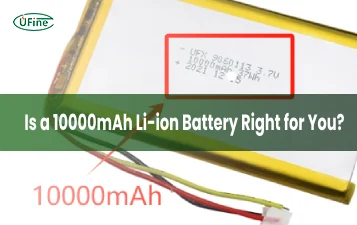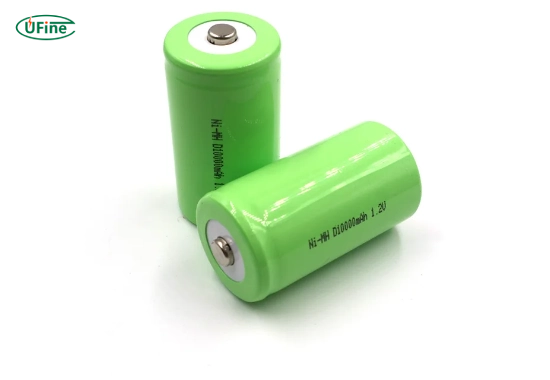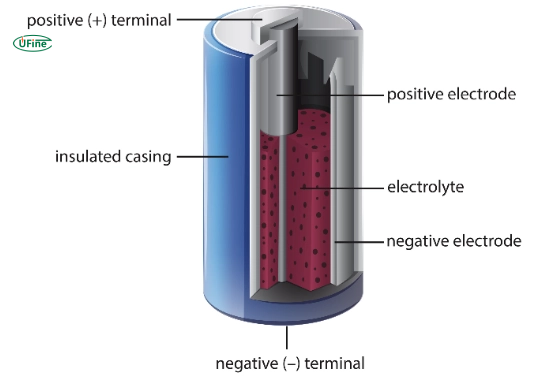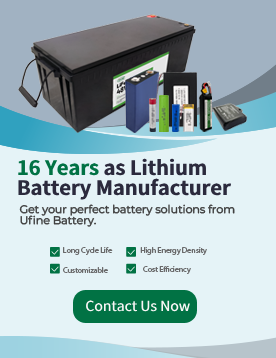Rechargeable D batteries with chargers are essential for many household devices and tools. Whether you’re powering a flashlight, a toy, or a portable radio, D batteries offer a reliable and long-lasting power source. However, rechargeable D batteries have become increasingly popular with the growing emphasis on sustainability. They allow you to reuse them multiple times, saving money and reducing environmental waste.
In this ultimate guide, we will explore everything you need to know about rechargeable D batteries with chargers, from their benefits and types to how to choose the right one for your needs. We will also answer common questions and provide valuable tips on caring for your rechargeable D batteries to ensure optimal performance.
Part 1. What are rechargeable D batteries?
Rechargeable D batteries are a type of battery that can be charged and reused multiple times. Unlike regular D batteries designed for single use, rechargeable versions can be recharged using a battery charger, making them more cost-effective and environmentally friendly.
Rechargeable D batteries typically come in Nickel-Metal Hydride (NiMH) or Nickel-Cadmium (NiCd) chemistry. NiMH batteries are generally considered the better choice due to their higher energy density and lower environmental impact than NiCd batteries, which contain toxic cadmium.
Benefits of Rechargeable D Batteries
- Cost-Effective: Since they can be reused multiple times, you save money over the long term.
- Environmentally Friendly: Reduces the number of disposable batteries in landfills.
- Consistent Power Output: Rechargeable D batteries often provide more consistent voltage output than regular disposable batteries.
Part 2. What do you need to charge rechargeable D batteries?
To charge rechargeable D batteries, you need the following:
- Rechargeable D Batteries: Choose NiMH rechargeable D batteries for better performance and safety.
- Battery Charger: A compatible charger that can handle D batteries and the battery type you’re using (usually NiMH or NiCd).
- Charging Station: Some chargers allow you to charge multiple batteries at once, making them more convenient for devices that require numerous D batteries.
Part 3. How do rechargeable D batteries work?
Rechargeable D batteries work by storing electrical energy in chemical form. During charging, an electrical current is supplied to the battery, causing a chemical reaction inside the battery that restores its energy. This process is reversible, meaning that D batteries can be recharged and used many times before they need to be replaced.
The battery charger controls the charging process to ensure the battery is charged to the correct voltage and prevents overcharging, which could damage the battery.
Part 4. Types of rechargeable D batteries
Two primary types of rechargeable D batteries are available: NiMH and NiCd.
1. NiMH (Nickel-Metal Hydride) Rechargeable D Batteries
NiMH batteries are the most common type of rechargeable battery. They have a higher capacity than NiCd batteries, which can store more energy and last longer between charges. They are also more environmentally friendly because they do not contain toxic cadmium.
2. NiCd (Nickel-Cadmium) Rechargeable D Batteries
NiCd batteries have been used for many years. Still, they are less popular now due to their lower capacity and the toxic nature of cadmium. These batteries are more prone to the “memory effect,” meaning they may lose capacity over time if not fully discharged before recharging.
In addition to NiMH and NiCd batteries, Lithium-ion (Li-ion) batteries are also a notable option, especially when high energy density and a long lifespan are required.
3. Lithium-ion (Li-ion) Rechargeable D Batteries
Li-ion batteries offer a higher energy density than NiMH and NiCd, meaning they can store more energy in the same size. This makes Li-ion D batteries ideal for many high-performance devices, such as high-power electronics or high-intensity flashlights.
- Higher Capacity: Li-ion batteries typically provide longer usage times and more energy storage, which makes them suitable for high-demand applications.
- Longer Lifespan: Li-ion batteries can generally last much longer than NiMH or NiCd batteries, providing a greater return on investment over time.
- Lightweight and Compact: These batteries are usually lighter and more compact, making them ideal for portable devices.
Although Li-ion batteries are more expensive than NiMH and NiCd, their superior performance and longer lifespan often justify the higher initial cost.
Part 5. How to choose the right rechargeable D batteries?
When selecting rechargeable D batteries, there are several factors to consider:
- Capacity: Look for a battery with a higher mAh (milliampere-hour) rating, which indicates a higher capacity. A higher mAh means the battery will last longer between charges.
- Battery Type: Choose NiMH over NiCd for better performance and fewer environmental concerns.
- Charger Compatibility: Ensure your charger is compatible with the type of D battery you plan to use.
- Brand Reputation: Opt for reputable brands that offer warranties and customer support.
Part 6. How to charge rechargeable D batteries properly?
Charging rechargeable D batteries properly is crucial to ensuring their longevity and performance. Here are some tips for charging your D batteries:
- Use the Right Charger: Always use a charger designed for NiMH or NiCd batteries (depending on your battery type).
- Avoid Overcharging: Overcharging can cause the battery to overheat and reduce lifespan. Many modern chargers have built-in features to prevent overcharging.
- Charge in a Safe Location: Charge your batteries in a well-ventilated area to avoid overheating.
- Follow Manufacturer Instructions: Always follow the manufacturer’s instructions regarding charging times and safety precautions.
Part 7. How long do rechargeable D batteries last?
The lifespan of rechargeable D batteries depends on several factors, such as:
- Battery Type: NiMH batteries typically last longer than NiCd batteries.
- Charging Cycles: Most rechargeable D batteries can withstand several hundred charge cycles before their capacity begins to degrade.
- Usage: Heavy use or improper charging practices can shorten the lifespan of your D batteries.
Rechargeable D batteries can last between 2 to 5 years with proper care.
Part 8. Common problems with rechargeable D batteries
Some common issues with rechargeable D batteries include:
- Loss of Capacity: Batteries can lose their ability to hold a charge over time.
- Memory Effect: This problem is common with NiCd batteries and occurs when the battery “remembers” its previous charge level, reducing capacity.
- Overheating: If a battery overheats during charging, it can be damaged and stop working effectively.
Part 9. Where can you buy rechargeable D batteries with a charger?
Rechargeable D batteries with chargers are available at many online retailers, electronics stores, and hardware stores. Popular platforms like Amazon, Walmart, and eBay often offer a wide selection of rechargeable D batteries from trusted brands.
Part 10. FAQs
-
Can I Use Regular D Batteries Instead of Rechargeable Ones?
No, regular D batteries are disposable and cannot be recharged. If you want to save money and reduce waste, rechargeable D batteries with a charger is best. -
How Long Does It Take to Charge a Rechargeable D Battery?
Charging time depends on the battery capacity and the charger’s power. Typically, it takes 6 to 12 hours to charge rechargeable D batteries fully. -
Can I Leave Rechargeable D Batteries in the Charger?
It’s not recommended to leave batteries in the charger for extended periods, as this could overcharge them. Modern chargers usually have safety features to prevent this. Still, removing the batteries once they are fully charged is always best. -
How Can I Extend the Life of My Rechargeable D Batteries?
To extend the life of your rechargeable D batteries, charge them properly, avoid overcharging, and store them in a cool, dry place. -
Are Rechargeable D Batteries Safe?
Yes, rechargeable D batteries are generally safe if used correctly. Always follow the manufacturer’s instructions, and use a compatible charger to avoid accidents.
Related Tags:
More Articles

10000mAh Battery Explained: How Long It Lasts, How It Works
A full guide on 10000mAh li-ion batteries, voltage, usage time, and tips. Discover how a 10000mAh battery works, how long it lasts, and how to choose.
10440 Battery Guide: Size, Voltage, Capacity, Uses & More
Understand 10440 batteries better—size, voltage, safety, and how they compare to AAA. Find the best fit for your high-performance devices.
White Stuff on Battery Terminals: A Step-by-Step Cleaning and Maintenance Guide
White stuff on battery terminals is corrosion. Learn how to clean it safely, prevent damage, and keep your battery running strong with simple steps.
Understanding How Glass Mat Batteries Work: Technology, Benefits, and Limitations
Glass mat batteries power cars, RVs, and solar systems. Learn how they work, their benefits, and what to consider before choosing one.
A Buyer’s Guide for AA Size Lithium Battery
Discover the power of AA size lithium batteries—types, voltage, capacity, and more! Learn how to choose the best one for your needs. Read now!





